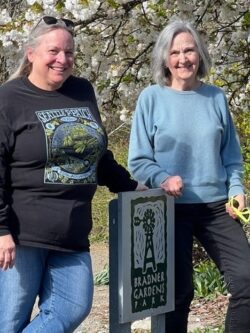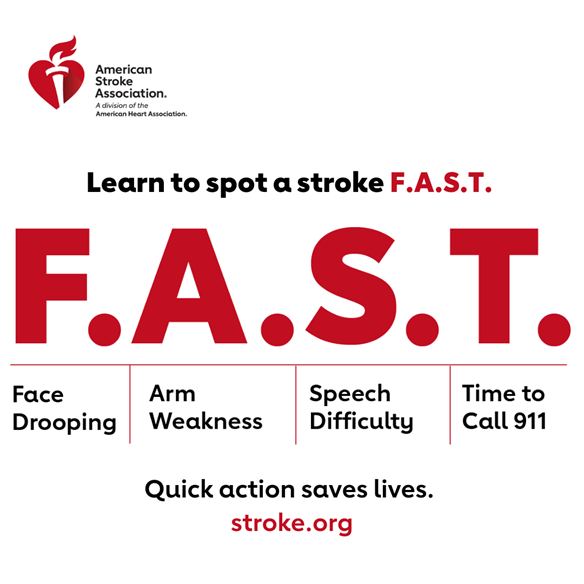Urgency Matters in Stroke Treatment

Pamela Willams and Joyce Moty pose for a photo at the Bradner Gardens P-Patch.
Joyce Moty feels she had a little dose of luck on her side the day she suffered a stroke. A P-Patch gardener for more than 30 years, Moty visited her garden that morning even though she was feeling “weird.”
“I noticed I was having a bit of trouble when I was typing,” said Moty. “My right side was a little limp. I also called a friend and was having some trouble sharing basic information, but I couldn’t attribute the symptoms to anything. They didn’t seem severe.”
The symptoms ended up improving so Moty drove to the garden. Moty worked on her patch and, as she was leaving, she passed a fellow gardener and stopped to say hello. That gardener happened to be a nurse practitioner who noticed that Moty’s speech was jumbled, and her sentences were strangely constructed. Instead of responding hello, the nurse practitioner told her, “You need to go to the emergency room right away.”
May is American Stroke Month, and the American Stroke Association encourages everyone to take time to learn the stroke warning signs using the acronym F.A.S.T. Often someone other than the person experiencing the stroke recognizes the symptoms and begins the chain of survival by calling 911.

Remember the acronym F.A.S.T. to identify stroke symptoms and take prompt action:
- Face: Ask the person to smile. Does one side of the face droop?
- Arms: Ask the person to raise both arms. Does one arm drift downward?
- Speech: Ask the person to repeat a simple phrase. Is the speech slurred or strange?
- Time: If you observe any of these signs, call 9-1-1 immediately and note the time when symptoms first appeared. Do not drive to the hospital; call for an ambulance so that medical professionals can provide life-saving treatment en route to the emergency room.
If you or someone else experiences stroke symptoms, seek medical attention promptly. Remember, every minute counts! 🚑
In Moty’s case, she was driven immediately to the hospital by the nurse practitioner’s husband and the nurse practitioner alerted the on-site medical team that Moty was coming in with a suspected stroke, “They were ready for me when I arrived,” said Moty.
Stroke treatments are available, but they are time-bound, meaning they need to be delivered within hours of the stroke happening. This fact makes symptom recognition even more critical.
The type of stroke Moty suffered is called an ischemic stroke and occurs when the blood supply to the brain is blocked by a clot. According to the American Stroke Association, ischemic strokes account for 87% of all strokes.
Treatments for ischemic stroke can include “clot-busting” medication that is designed to dissolve a clot and restore blood flow to the brain. Sadly, the majority of people suffering from a stroke don’t arrive at the hospital in time to receive the medication. There is also a procedure to remove the clot mechanically, called thrombectomy. In a thrombectomy procedure, a wire cage is threaded through an artery in the groin up to the brain and the cage “grabs” the clot and it is removed. Thrombectomy’s are usually performed within six hours of the stroke occurring but can be done up to 24 hours after symptoms start if imaging tests show undamaged brain tissue. Calling 911 if you suspect stroke is critical to recovery from stroke.
Moty was treated with a thrombectomy procedure and feels fortunate to have no residual impacts of the stroke. To give back to the community that helped save her life, she shared her experience with P-Patch gardeners to encourage them to learn the stroke warning signs and to take immediate action if a stroke is suspected. She also volunteers for the American Stroke Association to further raise awareness and let the community know that a full stroke recovery is possible.
 Contributor Valerie Koch is Senior Director of Communications and Marketing at American Heart Association Washington.
Contributor Valerie Koch is Senior Director of Communications and Marketing at American Heart Association Washington.
![AgeWise King County [logo]](https://www.agewisekingcounty.org/wp-content/themes/agewisekingcounty/images/logo.png)